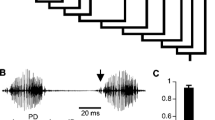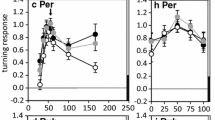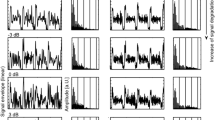Abstract.
The phonotactic behaviour of the duetting bushcricket Poecilimon ornatus was investigated on a walking compensator when two females responded to the male's call. Whenever two female clicks from different directions were presented within the time window, males tracked an intermediate course even when the two clicks were separated by up to 60 ms and differed widely in intensity. Thus, any signal arriving within that interval contributes to the localization of the female response. The inability of male P. ornatus to selectively track one of two females is in contrast to previous results found in other bushcricket species which track the leading of two singing animals. We suggest that the intermediate walking is a consequence of the basic ensiferan neuronal processing of song recognition and localization. Choice experiments in the natural habitat show that – earlier or later during the phonotactic path – the male tracks that female which is favoured by the unpredictable acoustic conditions in dense vegetation.
Similar content being viewed by others
Author information
Authors and Affiliations
Additional information
Electronic Publication
Rights and permissions
About this article
Cite this article
Helversen, D., Schul, J. & Kleindienst, HU. Male recognition mechanism for female responses implies a dilemma for their localisation in a phaneropterine bushcricket. J Comp Physiol A 186, 1153–1158 (2001). https://doi.org/10.1007/s003590000167
Accepted:
Issue Date:
DOI: https://doi.org/10.1007/s003590000167




